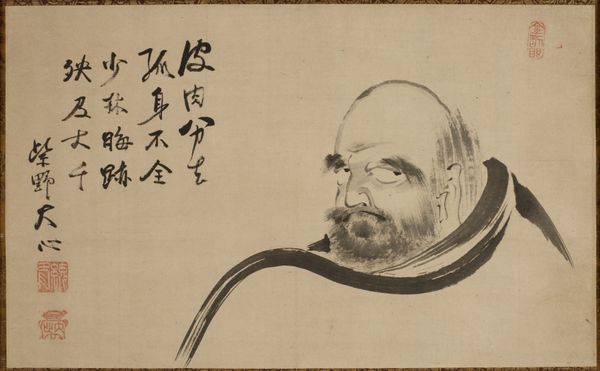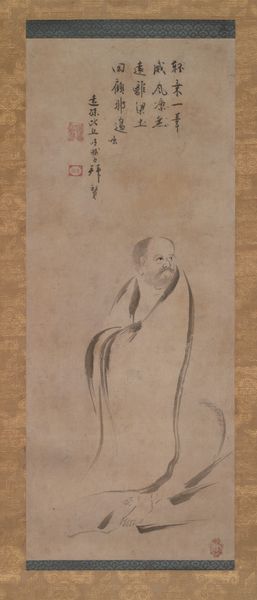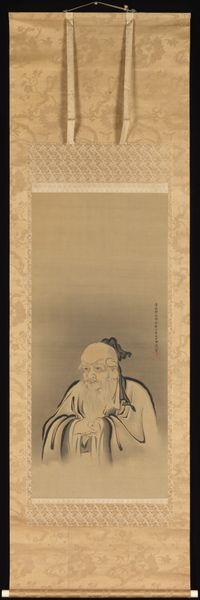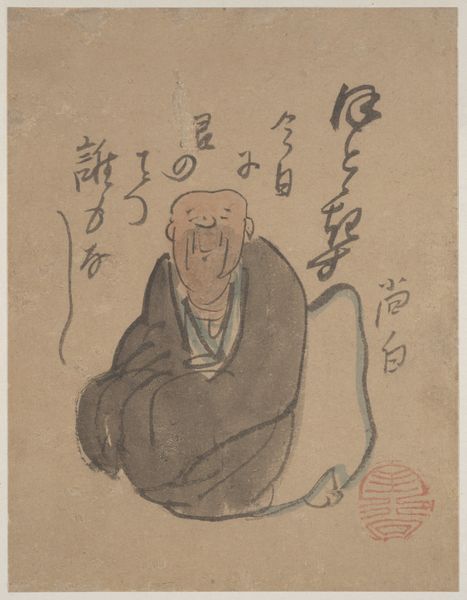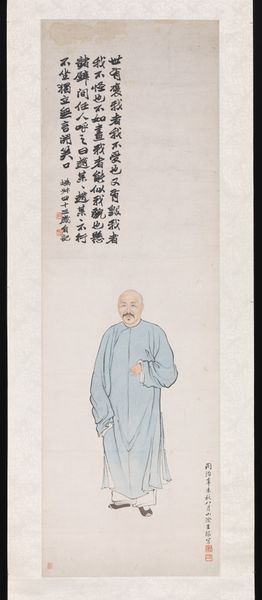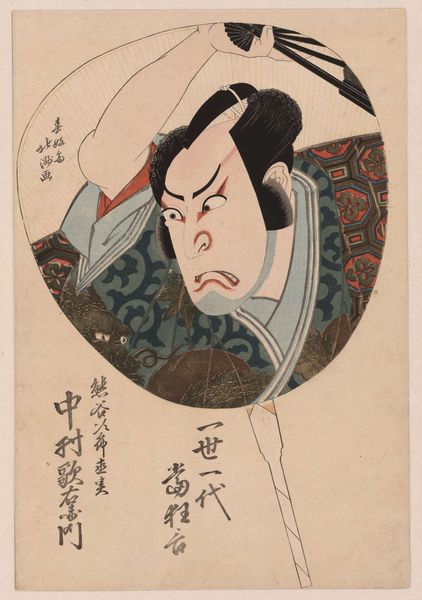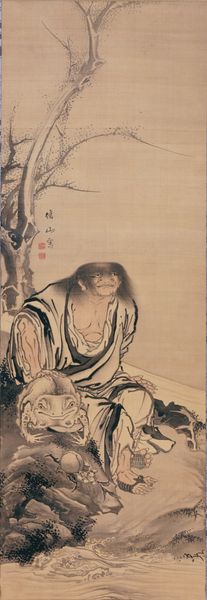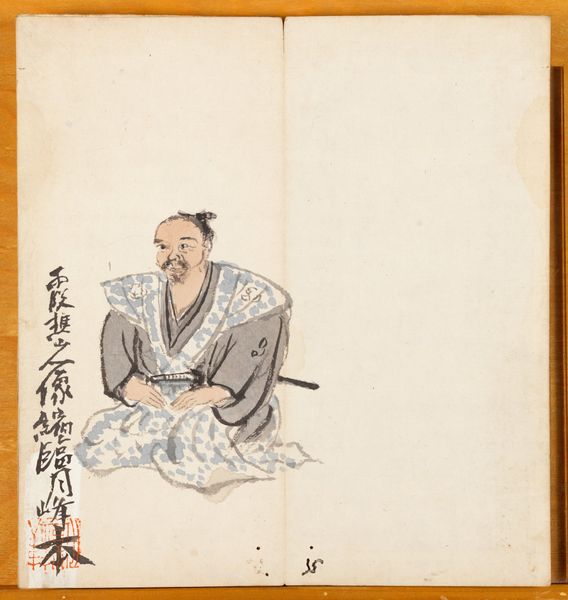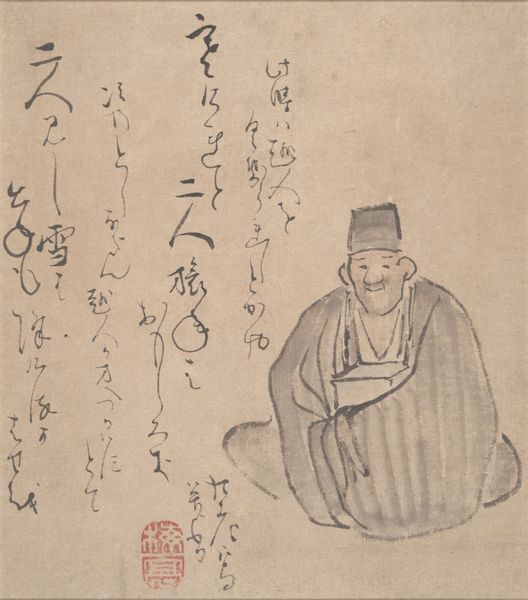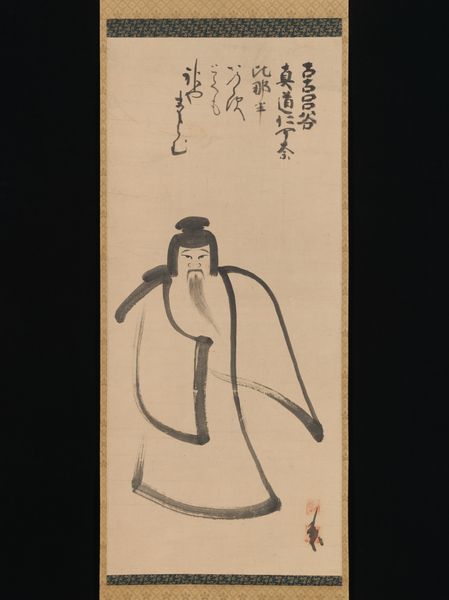
paper, ink
#
portrait
#
asian-art
#
figuration
#
paper
#
ink
#
calligraphy
Dimensions: 18 x 14 in. (45.72 x 35.56 cm)
Copyright: Public Domain
Curator: This is Fūgai Ekun's "Bodhidharma," painted around 1645. It's an ink on paper work, currently residing here at the Minneapolis Institute of Art. Editor: The sheer expressive power of such minimal means! Those stark, calligraphic lines—they really convey an intensity of spirit. There's a certain… austerity to it. Curator: Indeed. Consider the social context of Zen Buddhist art production at the time. The emphasis on spontaneity and intuition directly links to the Zen philosophy, doesn't it? Fūgai Ekun, a Rinzai Zen priest himself, used readily available materials to democratize artistic practice. It’s not about precious materials; it's about immediate expression. Editor: Yes, and the cult of personality surrounding figures like Bodhidharma! His image was carefully curated, wasn't it? He embodies defiance; staring intensely back at us from the paper after centuries. Curator: He absolutely disrupted prevailing aesthetics. It seems Fūgai Ekun used the gestural quality of ink and brush to directly relate the teachings of Zen Buddhism to the viewer. In particular, notice the economic efficiency and simple techniques of ink wash painting used. Editor: It also says something about the value society places on spiritual leaders. Museums enshrine these objects, transforming devotional works into valuable artworks viewed for art’s sake as much as for religious instruction. The inscription alongside it, those characters... Curator: These seals were added by later collectors, also becoming a testament to the life and evolving meaning of the work. Consider how this adds value and authenticity to it. Editor: Good point. And the accessibility through art! That rough stroke style really speaks to broader cultural anxieties. Curator: Absolutely! So even as we contemplate the figure of Bodhidharma, we must recognize how materials shape artistic choices. Editor: It provides a profound glimpse into the history of belief and its power to move materials, doesn’t it? Curator: Exactly, and the cultural contexts within which such images acquire power, evolve, and take new form.
Comments
No comments
Be the first to comment and join the conversation on the ultimate creative platform.
